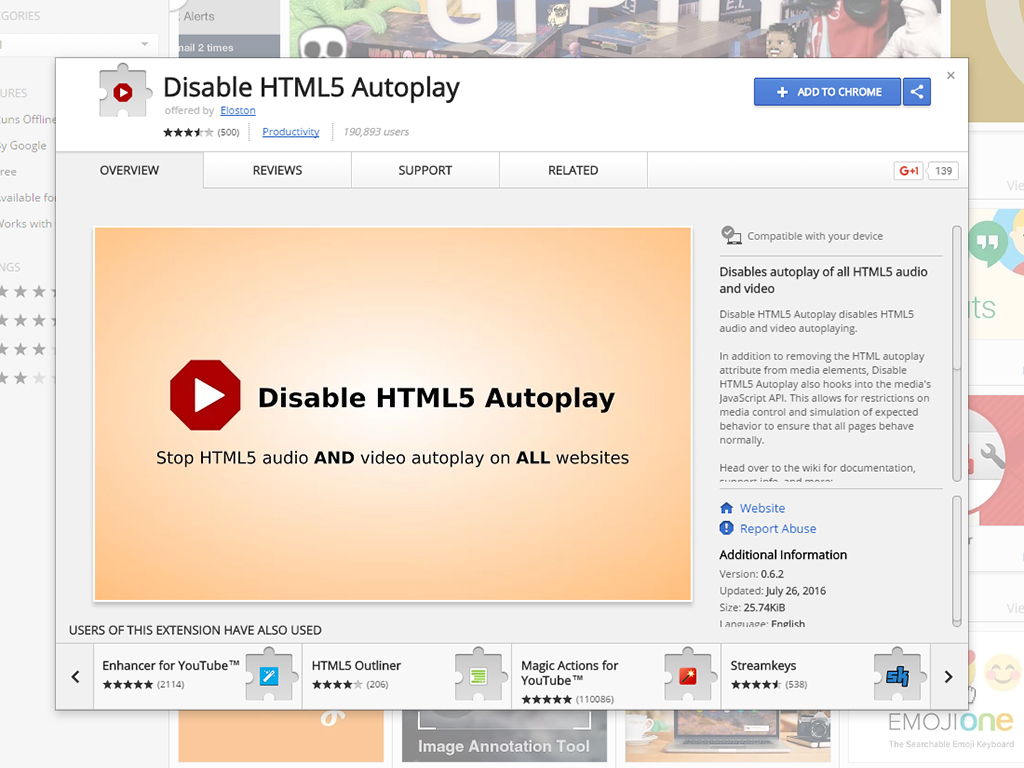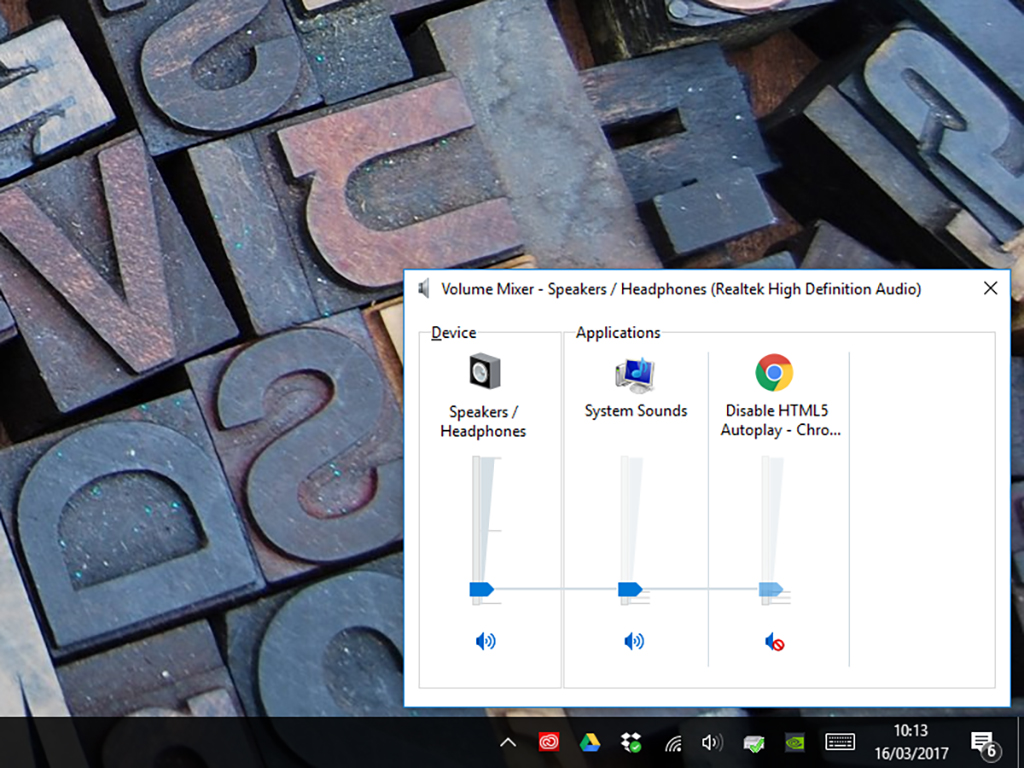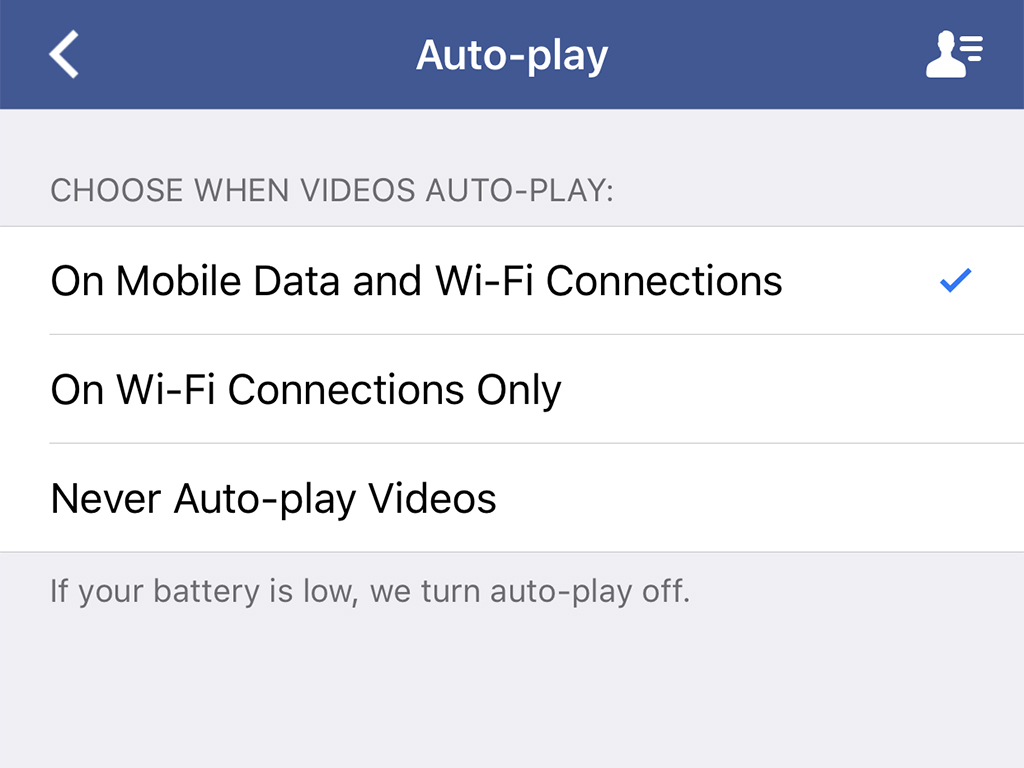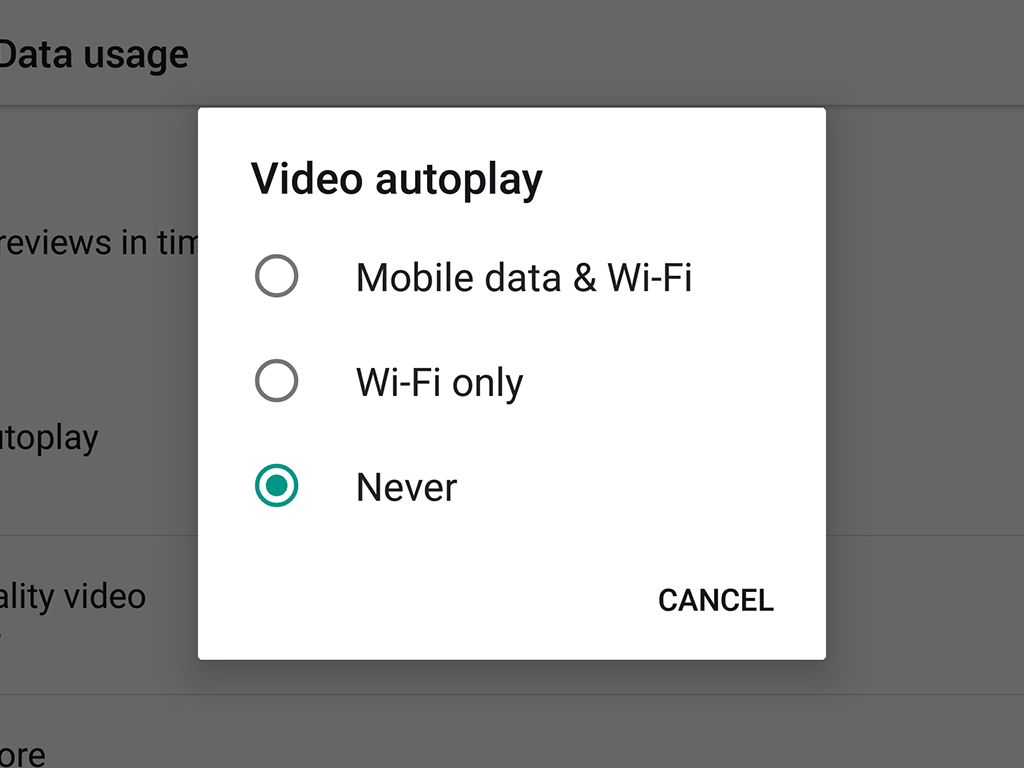

It’s one of the modern web’s most annoying features: You’re innocently browsing around, when music and dialogue suddenly start blasting out of nowhere, thanks to an embedded video that’s decided to start playing without a green light from you.
Autoplaying clips are enough to make us pine for the days when the internet was just text and low-res images, but there are ways to fight back against the scourge. Follow these steps online or on your phone to take the auto out of autoplay.
In your web browser

The bad news is there’s no “master switch” in most browsers that you can flick to prevent videos from playing on their own, which means you need to get a bit more creative. You should also be aware that there’s no blocking method guaranteed to work 100 percent of the time, although you can certainly minimize the issue.
Part of the problem is that websites are now using video in all kinds of different ways, and they’re halfway through switching from the older Adobe Flash technology to the newer HTML5 format. So stomping down on every single autoplaying video on every single site is trickier than you might think.
Some social sites, like Facebook and Twitter, let you disable autoplaying videos, though this doesn’t really help with advertising and pop-ups on the wider web. For Facebook, go to the main Settings page on the web, then open the Videos tab to disable the autoplay option. For Twitter, open Settings and privacy from the menu under your avatar (top right), then find the Video autoplay tick box.

For a broader block, browser extensions are the simplest and most effective option in Chrome, and Disable HTML5 Autoplay is the best of the add-ons we’ve seen. It doesn’t cover Flash, but Chrome is phasing out Flash anyway, and you can disable this older technology from the Content Settings pane under Chrome’s advanced settings list (choose Settings from the Chrome menu to find it).
If Firefox is your browser of choice, there is a native option that covers both HTML5 and Flash, but it takes some digging to find. First, type “about:config” in the address bar, hit Enter, and click through the confirmation screen. Search for a setting called “media.autoplay.enabled,” then double-click to disable it. Even this doesn’t catch absolutely everything, based on some user feedback we’ve seen, but it has become a more effective solution in recent versions of Firefox.
There is another, perhaps simpler choice: Mute your browser. You can either mute your computer at the system level, or (if you’re on Windows) just mute your browser app by right-clicking on the volume notification and choosing Open Volume Mixer.

What’s more, Chrome and Firefox let you mute single tabs by clicking or right-clicking on them. You’re not really blocking videos from autoplaying using this method, but it is an effective way of stopping the intrusive sounds from reaching your ears.
You’ll have noticed we haven’t mentioned Microsoft Edge or Apple Safari—that’s because neither browser offers a built-in option or a third-party extension specifically for stopping autoplaying videos. If you’re using Safari on macOS, installing an ad blocker like AdBlock might stop some videos (those that are ads, anyway); otherwise there’s a rather detailed and technical workaround discovered by users that you might want to attempt if you’re comfortable with terminal commands.
There don’t appear to be any such options for Microsoft Edge. Yet. Nor are there any fixes for mobile browsers, so you’re stuck either listening to that unwanted content or reaching for the mute button.
In your mobile apps

There’s no system-wide toggle switch for video autoplaying on either Android or iOS, so if you want to stop these clips in their tracks, you need to explore the settings menus for all of the relevant apps on your phone or tablet.
Facebook’s probably first on the list for many—on Android, go to App Settings from the main app menu, then tap Auto-play and choose Never Auto-play Videos. On iOS, the same option is under Settings, Account Settings, and Videos and Photos from the app’s menu.
Over in Twitter land, you need to choose Settings and privacy, then Data usage, then Video autoplay, and check the Never box on Android. On iOS, tap the Me button, then the cog icon, then Settings and finally Data usage to find the same option.

Being able to stop videos really depends on the app—you can’t disable autoplay in Instagram, for example, though you can tell it to minimize data use when you’re not on Wi-Fi. If there’s an app that’s annoying you with video autoplay, then all you can do is dig around in the settings and see if there’s a way to disable the behavior.
As on your laptop or desktop, mute is always an option if you want to minimize the risk of loud video audio blaring in your ears—on (stock) Android, swipe down with two fingers from the top of the home screen, then tap Do not disturb; on iOS, flick the mute switch or bring up Control Center (swipe up from the bottom of the screen).
With web technologies, video formats, websites, and browsers changing on an almost daily basis, keeping on top of autoplaying video isn’t as easy as it might seem at first. But the tips above should help you control the worst of those unwanted clips and the sounds that go along with them.
